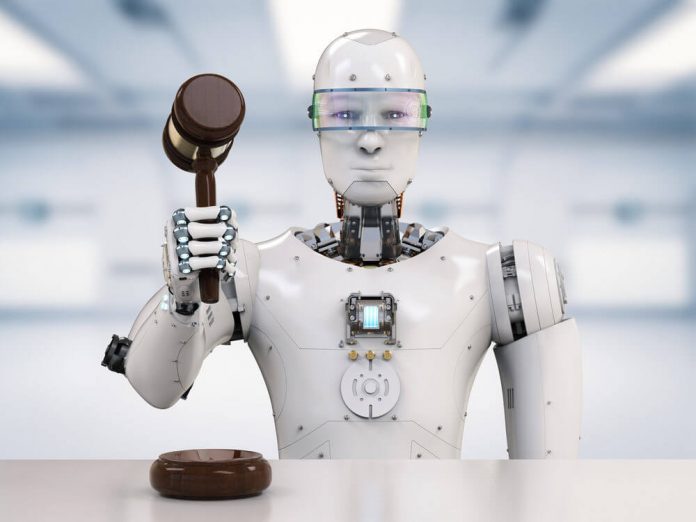This article is written by Alfaiz Nizami, pursuing a Diploma in Business Laws for In-House Counsels from LawSikho.
Table of Contents
Introduction
“Justice delayed is Justice denied.” – William Ewart Gladstone
No doubt we all have faith in our judiciary. This faith that we have in our judicial system has been developed over the years but in the times where our lives are being digitized and in a generation which is keen towards quick results, it is of utmost importance to improve the efficiency of our judicial system so that the faith remains intact. According to the Ministry of Law & Justice, the number of pending cases is almost 4 crores in our judicial system.
It is well settled that the burden needs to be distributed and what better way than to allocate it to a computer. Novel coronavirus taught us the need to be technologically sound. A lot of lawyers, judges and judicial staff found it extremely difficult to adapt to the setting of online hearing, e-filing of petitions in the Supreme Court. However, in an ever growing world, it is necessary to be aware about digital developments.
Artificial Intelligence
Artificial Intelligence is simply developing a machine to think and to act like a human mind using machine learning. The computer has to learn how to respond to certain actions, so it uses algorithms and historical data to create something called a propensity model. We unknowingly take assistance from AI every day. For eg-
- Google search when we type a single letter and it starts to make predictions as to what we are trying to search.
- YouTube as it learns the genre of videos we watch and starts to recommend similar genres of videos.
Technological developments in Judiciary
India ranks 17 on the government artificial intelligence readiness index compiled by Oxford Insights and the International Development Research Centre. Whereas the top 5 countries are in descending order- Singapore, UK, Germany, USA, Finland.
In 2020, due to the coronavirus outbreak, the world had to stop. But knowing the pendency of cases in the court the Supreme Court couldn’t afford to dismiss all its services. So the Supreme Court developed a portal called SCI-Interact to make all its 17 benches paperless. Another initiative like LIMBS is a web based application which enables monitoring of cases digitally in a more transparent manner.
On 6th April, 2021, the Supreme Court of India inaugurated its first AI portal called Supreme Court Portal for Assistance in Courts Efficiency (SUPACE). It is expected to reduce the workload of judges. The Supreme Court has been experimenting a lot to make things easy and accessible to use.
How SUPACE will assist the courts
Chief justice of India S.A. Bobde said that “they won’t let AI spill over to decision making.”
It is important to understand that every case making its way to either any high court or the supreme court also builds up a series of documents which consist of the charge sheet, orders, judgment from the subordinate court, etc. It is tedious work to go through all such documents again and find relevant information. This whole process makes the justice system slow and inefficient. That’s where SUPACE will come into play. It will process all such information and provide relevant data to the judges to make a decision, AI will filter the most important face and issues raised by the parties. It will help in legal research and tracking the progress of a case. However, it will not take any part in decision making.
Let us assume that ‘A’ is a Supreme Court judge and has a total of 4 hearings in a day. Each hearing is at a different stage with different facts. AI will help in making the process easy as it will give all such important data relating to the case to the judge and the judge won’t have to bury himself under a pile of files at the same time it will make the legal research easy and offer other uses to give a timely disposal of the cases.
The SUPACE portal is launched as a pilot in the Bombay and Delhi high courts dealing with criminal matters. A committee is also exploring the ways in which AI can be used to tackle Motor accident claims tribunal.
Possible uses of AI in Judiciary
Imagine if the courts were open 24/7, but due to the limited no. of judges and court staff, it is not possible. However, computers, unlike humans, don’t sleep or run on glucose.
Here are some suggestions on how AI can be used in future to alleviate the burden of Judiciary-
- Use of AI in organizing: AI can scan the lengthy documents of evidence and present systematic venn diagrams and graphs which can divide the legitimacy of evidence on strong, acceptable, weak evidence in those graphs. All this process is done by a judge in his mind which takes time. But it will be easier to analyze those graphs and then make a decision which the judge deems fit.
- Use of AI in dispute resolution: Just like in every contract we insert a dispute resolution clause which is to be tackled through arbitration or mediation etc. AI can act as an arm of the judicial system. A clause can be inserted in contracts that in case of dispute the matter will be adjudicated by AI. The role of AI will be to analyze the facts and evidence and then make a prediction of the Judgement or estimate the loss suffered by the party which needs to be compensated. Whether to accept the Judgement or not depends on the parties. The room to approach the court would always be open after this. This will cut down the cost of hiring expensive arbitrators and proceedings.
- Use of AI in small pecuniary matters: Although decision making in criminal matters involves human intelligence and emotions but in civil matters where the dispute is regarding a small amount can be decided by AI. For eg- if there is a traffic challan case then the AI can analyze the validity of license, registration plate, police challan, video recording of that traffic violation and based on that compute a punishment which can be enforced by the relevant court. This way the burden of judges will be reduced and they can be utilized in matters of much importance.
- Use of AI in other matters: there are other matters in court apart from delivering Judgement such as joinder of parties, misjoinder, deciding the territorial jurisdiction of the matter etc. Machine learning can be used to feed information as to when the joining of parties is done or which matters are out of the territorial jurisdiction of the court. All these matters take the time of the court, this work can be done by the AI and save time as well. A lot of judges are entrusted to do administrative work, imagine if that work can be done by a computer and supervised by any relevant person other than a judge. So that those judges can be utilized in a better manner.
Risk and apprehension associated with AI
AI may create some apprehension in the minds of people associated with the judicial services as they may feel that their job role will not be required in the future after the introduction of AI, but that is not the case, we are still at a very early stage of AI and human supervision is of utmost importance while taking assistance from AI.
Yes, the traditional way of maintaining files and records might become obsolete but the need for people to supervise the functioning and authenticating the data processed with the AI will be constant.
Will it impact the right to fair trial?
It is advised that while developing the software for Artificial intelligence, it is to be ensured that AI is compatible with the basic fundamental principles of our constitution.
The AI is based on machine learning, it will study the various factors on which a judge bases its decision. On the basis of that it will predict the outcome. However in order to ensure the right to fair trial. The judge must be compelled to give reasons on his Judgement as to why such a decision is correct.
Conclusion
Indian criminal justice system is based on the principle that no innocent shall be convicted even if 100 guilty are acquitted for that. AI should be programmed keeping in mind all these aspects. In 2020, we saw how the world could change in a couple of months. Whether AI will be a boon or a bane will be decided by the people of India.
It cannot be denied that there are millions of families waiting for the rightful Judgement from the court. It cannot be denied that people are in debt because of lengthy court proceedings, unaffordable advocate’s fees. Hence, it is inescapable on the part of judiciary and people associated with judiciary to accept the key to the future i.e. AI, and work alongside to reduce the total pending cases and give relief to the grieving people.
References
- https://www.revlocal.com/resources/library/blog/what-is-ai-and-how-does-it-work#:~:text=Artificial%20intelligence%20uses%20machine%20learning,like%20scoring%20leads%20or%20something).
- https://www.oxfordinsights.com/ai-readiness2019
- https://www.indiatoday.in/india/story/supreme-court-india-sc-ai-artificial-intellegence-portal-supace-launch-1788098-2021-04-07
Students of Lawsikho courses regularly produce writing assignments and work on practical exercises as a part of their coursework and develop themselves in real-life practical skill.
LawSikho has created a telegram group for exchanging legal knowledge, referrals and various opportunities. You can click on this link and join:












